The Cyber-shot DSC-QX100 is the high-end version of Sony's newly released iPhone-compatible wireless camera accessories, packing in a Carl Zeiss lens at an attractive price point. Like the low-end QX10, it's a forward thinking device with a great deal of potential that remains held back by shaky software.
Sony's QX-series Cyber-shot cameras are Wi-Fi Direct devices that wirelessly connect to a smartphone, such as Apple's iPhone, which acts as the viewfinder. The lenses can be clipped onto the iPhone for a traditional shooting experience, or the lens can be controlled remotely from a short distance for more interesting shots.
Hardware
Each QX camera uses a MicroSD card to store shots remotely from the iPhone, though pictures can be transferred manually or automatically if a user chooses. For the purposes of this review, Sony provided AppleInsider with a DSC-QX100 lens, as well as an 8-gigabyte Sony-branded MicroSD card and standard SD adapter.
The QX100 features a 1-inch Exmor CMOS sensor capable of capturing 20.9-megapixel images with a Carl Zeiss lens. It's identical to the sensor found in the Cyber-shot RX100II camera, which retails for around $750, or about $250 more than the QX100's $500 price tag.
It's also a big improvement over the 18-megapixel Exmor RCMOS 1/2.3-inch sensor and Sony G lens found in the QX10. But that improved image quality comes at a cost of size.
The QX100 is not quite twice as long as the more portable QX10. While we could squeeze the QX10 into a pocket if need be, the QX100 is big enough that it would definitely require a bag.
The hardware of the QX100 has a few welcome changes. Most notably is a focus ring on the device for manual adjustments. In addition, when autofocus is enabled through the Sony PlayMemories Mobile iPhone app that controls the lens, this manual ring reverts to a more precise zoom control.
The QX100 also moves the MicroSD card slot to the side of the lens, making it easy to swap out a card without disassembling the device. This is an improvement from the QX10, which houses the MicroSD slot inside near the battery compartment, requiring some work on the part of the user to replace.
Like the QX10, the QX100 also has a dedicated zoom control rocker on the left side of the device, as well as a hard shutter button. Both of these functions can also be controlled through the PlayMemories app.
One area where the QX10 bests the higher-end QX100 is zoom: While the QX10 has a great 10x optical zoom, the QX100 offers a much shorter range with 3.6x zoom. While the optical zoom on the QX100 is considerably less than the QX10, it's also far more than the iPhone's built-in camera offers — Â zero.
Software
As we noted in our QX10 review in September, the Achilles' heel of Sony's QX-series cameras is the company's proprietary PlayMemories Mobile application for iOS, which offers substandard performance in controlling the lens. Sony explained that those issues were due to the fact that the software was not updated for iOS 7.
Since then, the application has thankfully been upgraded with iOS 7 support and various bug fixes. The changes are in fact a marked improvement, but PlayMemories Mobile still has a long way to go, unfortunately.
Before, it would take 10 or more seconds for the PlayMemories application to establish a connection with a QX camera and begin shooting. Now, that connection time is closer to 5 seconds. While this is a big improvement, we don't feel it's enough, though Sony may be hampered by the limitations of Wi-Fi Direct.
Also improved are the amount of crashes and random disconnects we previously experienced with the PlayMemories app. The latest version provides a more reliable connection, though it's still not perfect.
On a number of occasions we would be presented with a spinning wheel in the middle of the screen and were unable to snap a picture by using the app's shutter button. Using the shutter button on the QX100 still worked fine, but we were shooting blind without an idea if our subject was in focus, or in the picture at all.
What makes the issues all the more frustrating is that when the PlayMemories app works, it works great. The live viewfinder is sharp enough to give an idea of what the captured picture will look like, and it's responsive with minimal lag.
Sony has said that third-party applications like Camera360 and Camera+ will be adding support for controlling the QX lenses in the future. Those functions are not currently available in either app.
No updates to PlayMemories, or any third-party apps, are going to change the fact that connecting to the QX100 (and QX10) can be a hassle. If you're using your iPhone at home, where you presumably already have a Wi-Fi connection, you'll have to open the Settings app and manually choose to connect over Wi-Fi Direct to the lens. After that connection is established, you'll then have to launch the PlayMemories app to control it.
If the best camera is the one that's available to you, then the setup process of the QX series pushes these lenses down the rankings. And those issues are further compounded by occasional hangups with the PlayMemories app itself.
We commend Sony for improving its app, and accordingly adjusted our score on the QX10 camera from 2.5 stars to 3 stars. However, there's still a great deal of room for improvement, and we hope that further updates from Sony, or a potential third-party application to control the QX cameras, will further improve performance.
New settings are also unlocked in the app when using the QX100, such as an Aperture Priority Shooting mode that give advanced photographers more functionality and flexibility.
On the next page, comparison shots between the QX100, QX10 and iPhone 5s
Comparison shots: QX100, QX10 and iPhone 5s
In picture samples, the QX100 is unsurprisingly the clear winner. Details in shots are crisp, colors are vibrance, and light balance is natural. All QX100 and QX10 sample shots above were done with auto-adjustment features via the Sony PlayMemories Mobile app, while the iPhone 5s pictures were taken using Apple's official Camera app for iOS 7.
The QX100 also dealt the best by far with shadows, pulling out colors from darkened objects while lesser, smaller cameras were unable to capture as much light.
The QX10, as we noted in our review of that device, edges the iPhone 5s as well, but its real selling point is the device's built-in 10x optical zoom. That's something the iPhone 5s can't compete with.
In more difficult shots, like the Flatiron building above, the results were varied. The QX100 was again the best picture, though the iPhone 5s was a good performer with the auto-focus. The QX10 showed good detail on the building, but the bright background sky was blown out. This could probably be fixed with manual adjustments, but the purpose of our tests were for quick-take photographs.
Wrap-up
In our QX10 review, we praised Sony for creating an ambitious, unique device that's the only of its kind on the market. That stands for the QX100 as well.
It's hard not to get excited about the potential of a wireless lens controlled by your smartphone, allowing for higher quality pictures than any iPhone can provide, while also maintaining the connectivity and apps offered by modern handsets.
The QX100 is harder to recommend than the QX10, however. While the picture quality on the QX100 is superior, it's far less portable and definitely not pocketable like its smaller, cheaper counterpart.
If you're going to need a bag to carry your QX100, you might as well spend the extra $250 and get a full-fledged RX100II camera, which features the same lens but does not rely on Sony's PlayMemories app for control.
For most iPhone owners, the QX10 seems like it would be the better fit. It takes better pictures than even the iPhone 5s, it has a great 10x optical zoom that really lets you get up close with far-away subjects, and it's far more pocketable than the bulky QX100.
For more serious camera enthusiasts eyeing the QX100, it's is an interesting concept and something you might consider purchasing if its unique advantages, such as wireless remote control capabilities, were something you could take great advantage of. But for a "prosumer" looking for an easy way to snap pictures on the go, opting for a more traditional camera is a better bet for now.
We're hopeful that future updates to the PlayMemories software, or third-party apps, will further improve the experience with the QX100. But we're even more hopeful that future versions of Sony's wireless camera concept are forthcoming to fulfill the current potential.
Score: 2.5 out of 5
Pros:
- Great picture quality and zoom
- Wireless connectivity offers new possibilities
- The concept remains strong
Cons
- Sony's iPhone app has been improved, but still needs work
- Setup time could cost users a great shot
- Not as pocketable as the QX10
Pricing and availability
The QX100 is available direct from Sony for $499.99, as well as from both Amazon and B&H Photo for $498. It comes in color options of black and white.
 Neil Hughes
Neil Hughes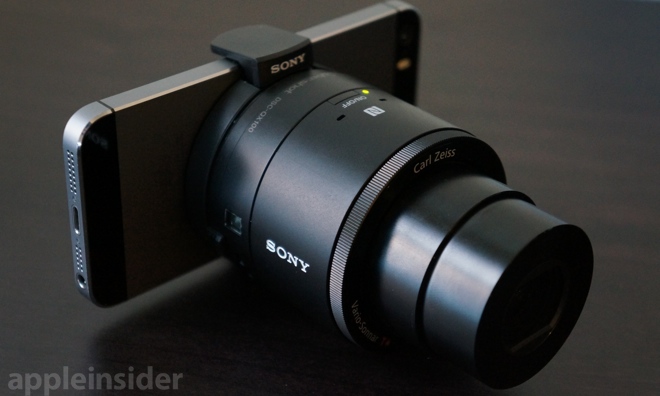
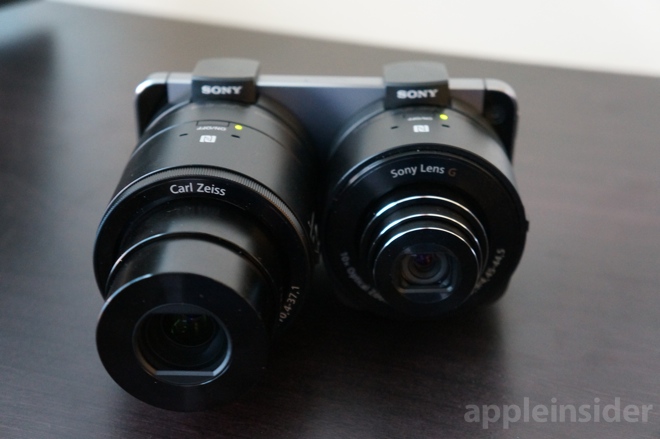
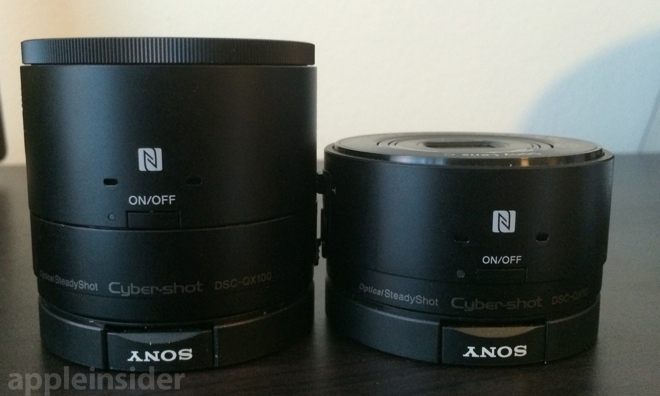
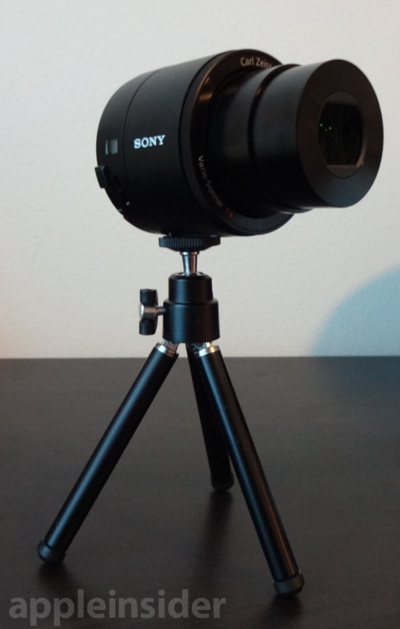

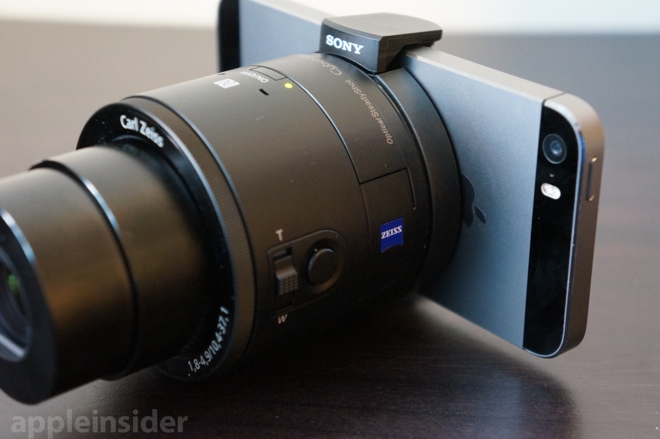
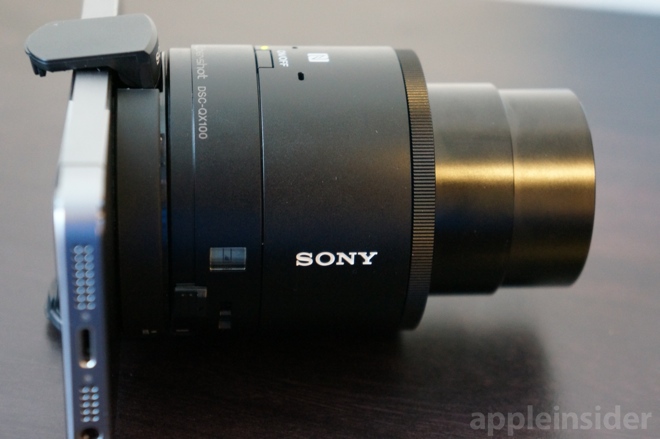





















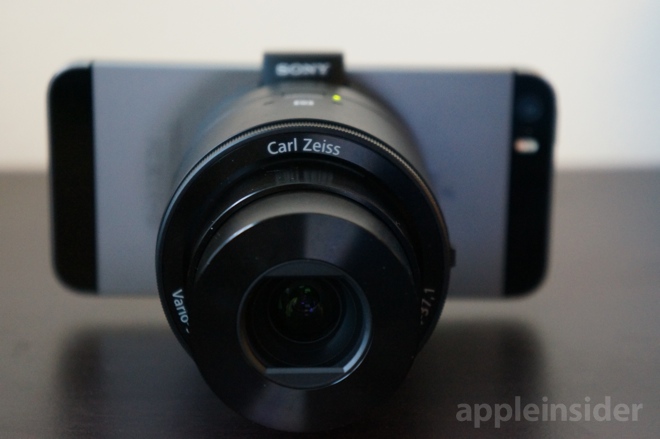

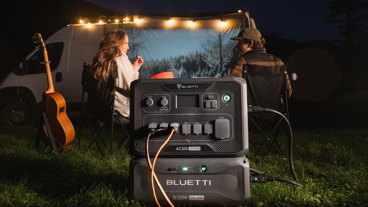

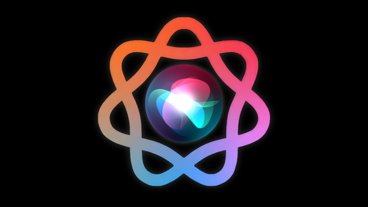










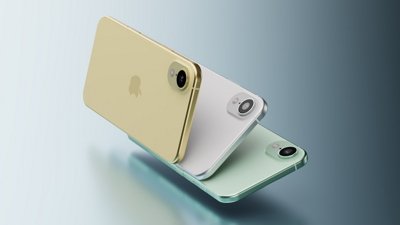
 Malcolm Owen
Malcolm Owen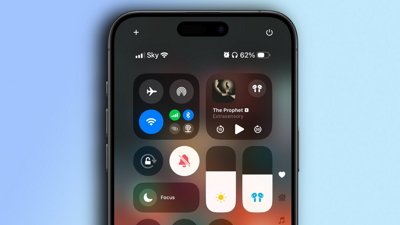
 Oliver Haslam
Oliver Haslam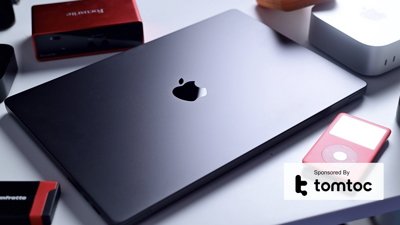
 Andrew O'Hara
Andrew O'Hara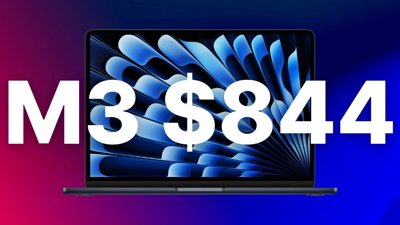
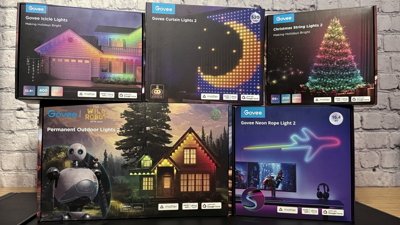
 Wesley Hilliard
Wesley Hilliard
 William Gallagher
William Gallagher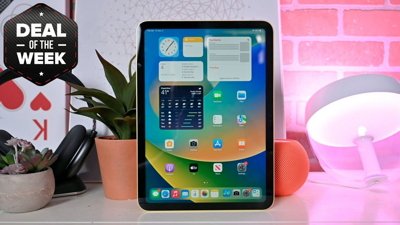
 Christine McKee
Christine McKee
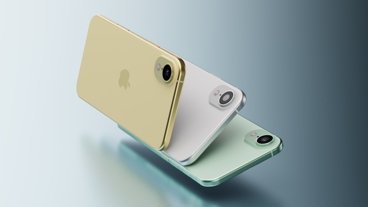
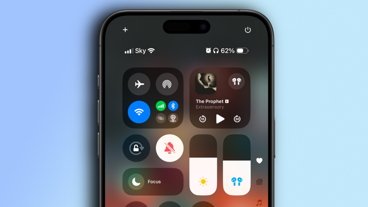







34 Comments
Agreed, it's a great concept. But is a concept still. I find mself asking this question: do I really need an awkward/unwieldy/clunky accessory which is difficult to mount and use when the right moment presents itself suddenly? It's about how many seconds away that moment is vis-a-vis device readiness capability. I wish I could have some optical zoom built-in with iPhone. I am not a pro and don't want to go into the realm of high-end camera only devices. I just want to take decent enough vacation pics and digital zoom sucks. I wonder, is there a practical need for such accessories? Either go for pro or be amateur. Is there a tri-state really?
I applaud Sony for it's fwd thinking. However, the "shaky" software would stop me from considering it.
Like most tech, whether it be hardware or software, I just can't be bothered with crappy products. I don't have a DSLR for this reason. I would rather take hundreds of photos with my iPhone (mainly outdoors on sunny days) to get 10 or 12 good photos than have to learn a clunky interface, never mind carry a big brick around.
Don't hammer me on this, but I only buy Apple SW (and third party Apps, of course) and hardware. If Apple doesn't make it, I don't buy it.
I've been let down by Apple a bit in the past, MobileMe comes to mind ($100/yr.), the first iteration of the iPhone's Podcast App, no copy & paste on the original iPhone.
But even with MobileMe's shortcomings, as an example, the ease of integration across the Apple ecosystem can not be overstated.
The integration aspect and strong ecosystem made up for a lot. I would much prefer to put up with the first iteration of Pages, Numbers, iCloud, Maps simply because one, I know Apple will make improvements and two, it just works.
One only has to think of the crappy interfaces that cable companies and TV manufacturer's employ.
Most App developers have learned to raise their standards to Apple quality on the software side. Now it's time for the Sony's of this world to produce not only great hardware but stellar software. to boot! :)
Edit: Having said the above, my daughter has a medium priced DSLR (<$1,000) and I am impressed with the quality of photos she takes. She said Cannon has the most Apple-like interface but it is still clunky.
Agreed, it's a great concept. But is a concept still.
I find mself asking this question: do I really need an awkward/unwieldy/clunky accessory which is difficult to mount and use when the right moment presents itself suddenly? It's about how many seconds away that moment is vis-a-vis device readiness capability.
I wish I could have some optical zoom built-in with iPhone. I am not a pro and don't want to go into the realm of high-end camera only devices. I just want to take decent enough vacation pics and digital zoom sucks.
I wonder, is there a practical need for such accessories? Either go for pro or be amateur. Is there a tri-state really?
All good points. My father used to say back in the day, most people are just taking "snapshots" with their insta-matic Kodak cameras.
He had a lot of high end cameras, tons of lens and a few bags to hold it all, but he never took it with him because it was to cumbersome.
He had a early 60's Leica camera with one lens and that's all he would ever take. It took great photos.
This is a joke. For $50 it might fly. For $500 . . . go home, Sony, you're drunk.
You can take some ridiculously impressive shots with the stock iPhone Camera (and you won't even blow out your highlights), using at least the built-in HDR feature plus some quality editing apps.
Just check out, for example, what Kevin Russ is doing with just an iPhone and some apps. No big-ass lens stuck in front, either.
This is a joke. For $50 it might fly. For $500 . . . go home, Sony, you're drunk.
You can take some ridiculously impressive shots with the stock iPhone Camera (and you won't even blow out your highlights), using at least the built-in HDR feature plus some quality editing apps.
Just check out, for example, what Kevin Russ is doing with just an iPhone and some apps. No big-ass lens stuck in front, either.Links for Kevin Russ @ tumblr -> http://kevinruss.tumblr.com @ Flikr -> http://www.flickr.com/photos/pattersonminx/ @ Society6 -> http://www.flickr.com/photos/pattersonminx/